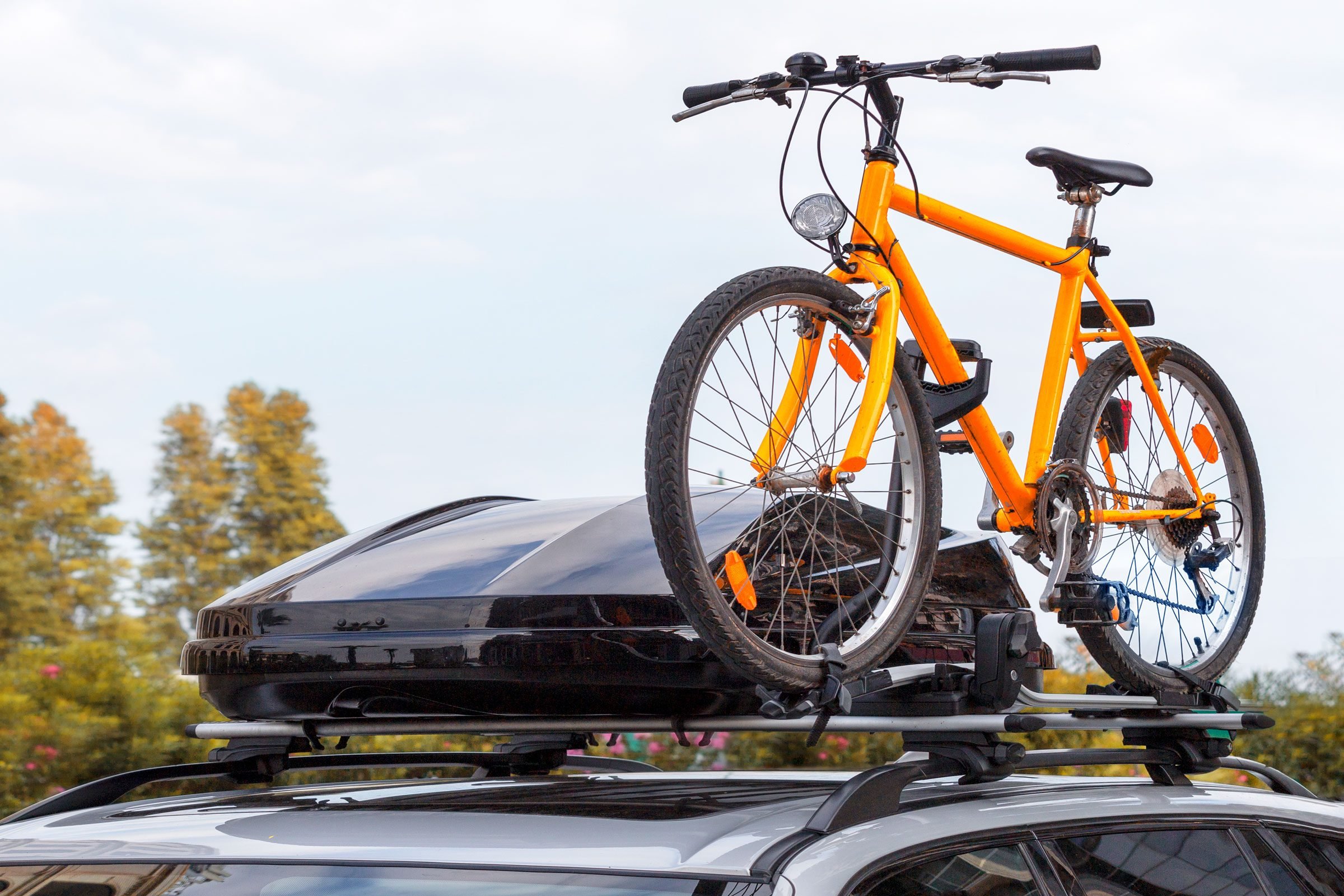If you have more hobbies than space inside your vehicle, you may need to invest in a roof rack.
Our editors and experts handpick every product we feature. We may earn a commission from your purchases.Learn more.


If you have more hobbies than space inside your vehicle, you may need to invest in a roof rack.
Our editors and experts handpick every product we feature. We may earn a commission from your purchases.Learn more.
At some point, every weekend warrior faces the same dilemma: Trying to find room for everyone’s gear in a vehicle with tight storage. If you love to play outdoors, a versatile roof rack is almost essential.
Think of your car’s roof rack as a mobile storage shed, where you can transport all manner of gear that wouldn’t otherwise fit inside your vehicle. Roof racks can be the best way to haul outdoor gear and large DIY materials, too, particularly if you don’t have a trailer hitch. Here’s what you need to know about them.
On This Page
A roof rack consists of a base and crossbars that let you securely stow various types of gear. Many vehicles come factory-equipped with raised side rails on the roof that can be adapted to your needs. But you can also buy ‘foot packs’ that attach to the rain gutters or fixed attachment points on the roof. It’s important that the foot packs you purchase match your vehicle, as well as the crossbar system you will be using.
The crossbars attach perpendicularly to the side rails or feet, allowing you to add accessory mounts for your various gear.
The most common roof-rack mounts are:
Thule and Yakima are the biggest names in aftermarket roof racks, but you can find less-expensive alternatives as well. Be aware that you’re buying into a manufacturer-specific system. For example, a Yakima bike mount typically won’t work with Thule crossbars, and vice versa.
If your vehicle comes pre-equipped with crossbars, you may be stuck with your car manufacturer’s proprietary system, or forced to buy adapters that let you use different equipment.
Here’s the easiest way to buy the correct rack for your vehicle: Type the make and model into a website like Rack Attack’s Fit Guide. From there, the site will list your options and prices. You can also walk into REI or your favorite sporting goods store and check out the printed reference guides to see what racks and accessories will work best with your vehicle.
Talk to people who own the same vehicle or roof-rack system you’re considering. I’ve asked complete strangers at trailheads loading their vehicles how they like their racks. They typically talk eagerly about their entire set up, including benefits or annoyances I never considered.
When buying a roof-rack system, many people simply choose the cheapest model that fits their vehicle. There are other factors to consider:
Your primary goal might be hauling your bikes, but are there other activities you routinely engage in or could potentially get into down the road? If yes, look at the accessory mounts that can be used with each compatible rack and choose the most versatile option.
One of the most often overlooked factors is whether you can transport different gear items at the same time. Plan to kayak and mountain bike at your destination? Can you fit both atop your roof? What about your cargo box and skis?
If you and your family do a lot of different outdoor activities, consider slightly wider crossbars to hold more stuff. The key phrase here is slightly wider. Your crossbars should only be as wide as the widest part of your vehicle, including mirrors.
If you’re looking to use the roof rack for DIY home improvement purposes, such as hauling lumber or other materials, consider a rack rated for heavier weights with sturdy anchor points for attaching ratcheting-strap hooks.
You may get a great deal on a rack and mount, but if it’s complicated or confusing you’ll dread using it. Ask yourself, “Will I be able to easily mount my gear and unload it when I get to my destination?”
Do you want a rack that forces you to remove your front wheel for transport or one that simply latches directly onto the frame? Plus, not all modern bicycles feature quick-release front wheels, so you need to make sure your rack is compatible with the bike you own or may buy in the future.
If you own a heavy e-bike and aren’t an Olympic power lifter, a roof rack isn’t a great option for you.
If a thief wants something badly enough they’ll find a way to take it. Don’t make it easy for them.
Roof racks can fail and dump your cargo all over the road if not installed and maintained correctly.
Although it goes against many DIYers’ ethos, if there’s an offer of free installation, take it. When I worked at a bike shop years ago, I installed several racks for customers or walked them step-by-step through the process. Many admitted they would have installed the rack wrong had they done it on their own.
You know who knows the best way to install your rack? The manufacturer. If you do need to DIY it, watching a five-minute install video in the manufacturer’s site on YouTube channel can save you hours of trial and error in your driveway.
When loading bikes or other gear, give the various parts a tug to make sure everything remains tight and secure.
It’s easy to forget you have expensive sporting equipment on the roof of your vehicle. Watch out for drive-thru windows, low-hanging bridges and covered parking lots. And if you park in your home garage, hang a sign or other reminder that you need to unload your gear before pulling in. It’s a pricey mistake that most roof-rack owners — myself included — have made.